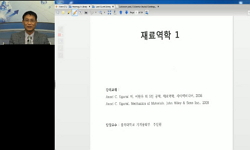Atrial myocytes are subjected to shear stress under physiological and pathological conditions during cardiac cycle. We recently reported that gap junction hemichannels play a role in the generation of Ca2+ wave in atrial cells under shear stress. In t...
http://chineseinput.net/에서 pinyin(병음)방식으로 중국어를 변환할 수 있습니다.
변환된 중국어를 복사하여 사용하시면 됩니다.
- 中文 을 입력하시려면 zhongwen을 입력하시고 space를누르시면됩니다.
- 北京 을 입력하시려면 beijing을 입력하시고 space를 누르시면 됩니다.
전단 자극 시 심방근세포 간극접합 채널 활성화에 의한 P2 퓨린수용체-매개 비선택성 양이온 전류의 발생 = Generation of P2 Purinoceptor-Mediated Nonselective Cation Current by Activation of Gap-Junction Hemichannels in Atrial Myocytes under Shear Stress
한글로보기https://www.riss.kr/link?id=A102058865
- 저자
- 발행기관
- 학술지명
- 권호사항
-
발행연도
2016
-
작성언어
Korean
- 주제어
-
자료형태
학술저널
-
수록면
70-75(6쪽)
- 제공처
- 소장기관
- ※ 대학의 dCollection(지식정보 디지털 유통체계)을 통하여 작성된 목록정보입니다.
-
0
상세조회 -
0
다운로드
부가정보
다국어 초록 (Multilingual Abstract)
Atrial myocytes are subjected to shear stress under physiological and pathological conditions during cardiac cycle. We recently reported that gap junction hemichannels play a role in the generation of Ca2+ wave in atrial cells under shear stress. In the present study, we examined whether ionic current is generated by the activation of gap junction hemichannels in rat atrial myocytes under shear stress using whole-cell patch clamp method combined with a pressurized microflow system. Shear stress of ~16 dyne/cm2 (1-s long) produced a slow inward current (ISS) at –70 mV in symmetrical CsCl-rich solutions.Removal of external Ca2+ to enhance hemichannel opening increased this shear-activated current by approximately 140%. In addition, the ISS was almost completely inhibited by the hemichannel blockers carbenoxolone (50 μM) or La3+ (2 mM). We next tested whether P2 purinoceptors activated by ATP released via hemichannels contribute to ISS cells using P2-purinoceptor antagonist suramin. Pre-treatment of suramin (10 μM) suppressed ISS to ~28% of control. When the delayed rectifying K+ channels, that have slight permeability to Cs+, were blocked using 4-aminopyridine (200 μM), ISS was not altered. Our data suggest that shear stress may activate gap-junction hemichannels, resulting in ATP release with subsequent P2 purinoceptor-mediated nonselective cation current in atrial myocytes.
동일학술지(권/호) 다른 논문
-
- 충남대학교 약학대학 의약품개발연구소
- 배지훈
- 2016
-
고체지질입자 제조방법의 입자크기와 봉입율에 미치는 영향
- 충남대학교 약학대학 의약품개발연구소
- 김보식
- 2016
-
HPLC를 이용한 염산베라파밀 원료 및 제제 중 유연물질의 정량
- 충남대학교 약학대학 의약품개발연구소
- 김경태
- 2016
-
N-acetylindoline과 acetanilide 유도체들의 방향족 환 수소의 chemical shift 변화의 비교 분석
- 충남대학교 약학대학 의약품개발연구소
- 이상윤
- 2016




 RISS
RISS






